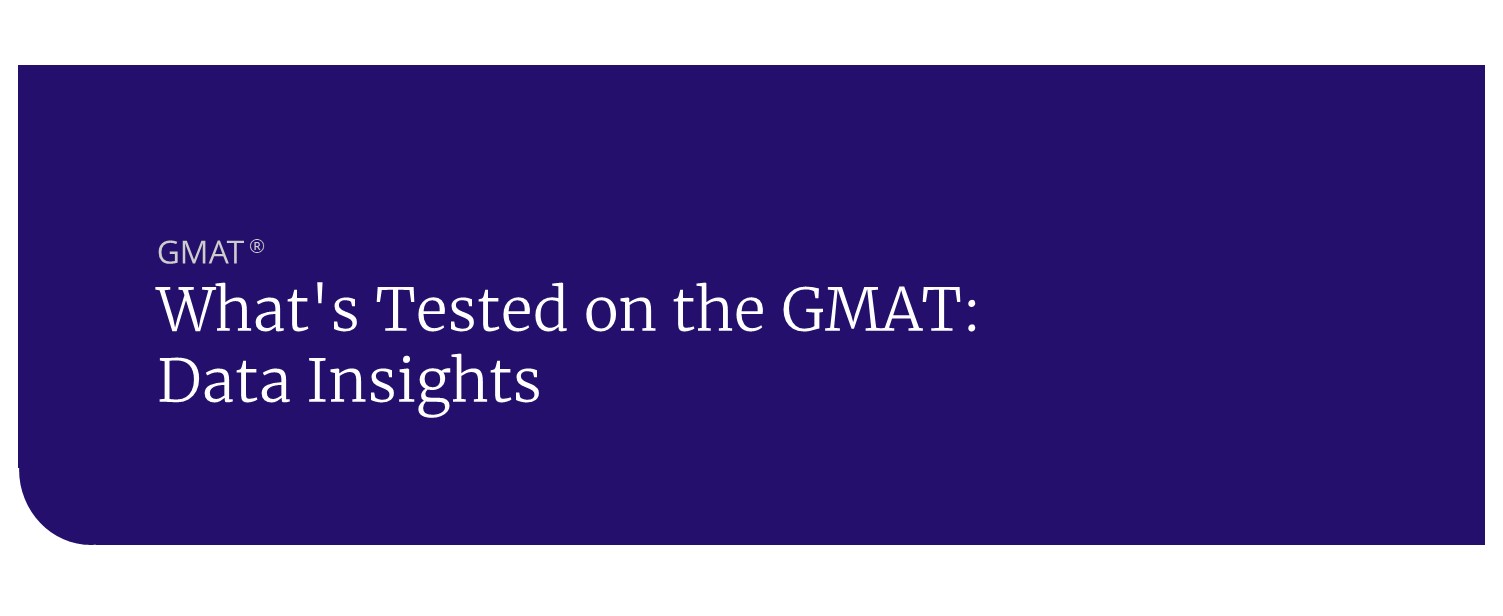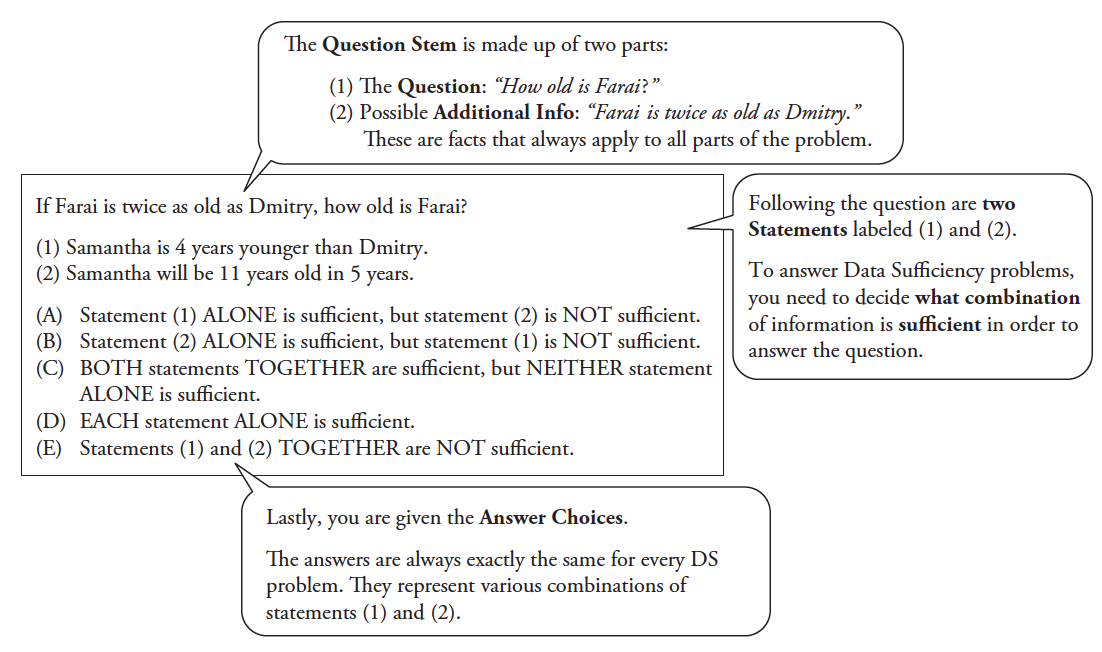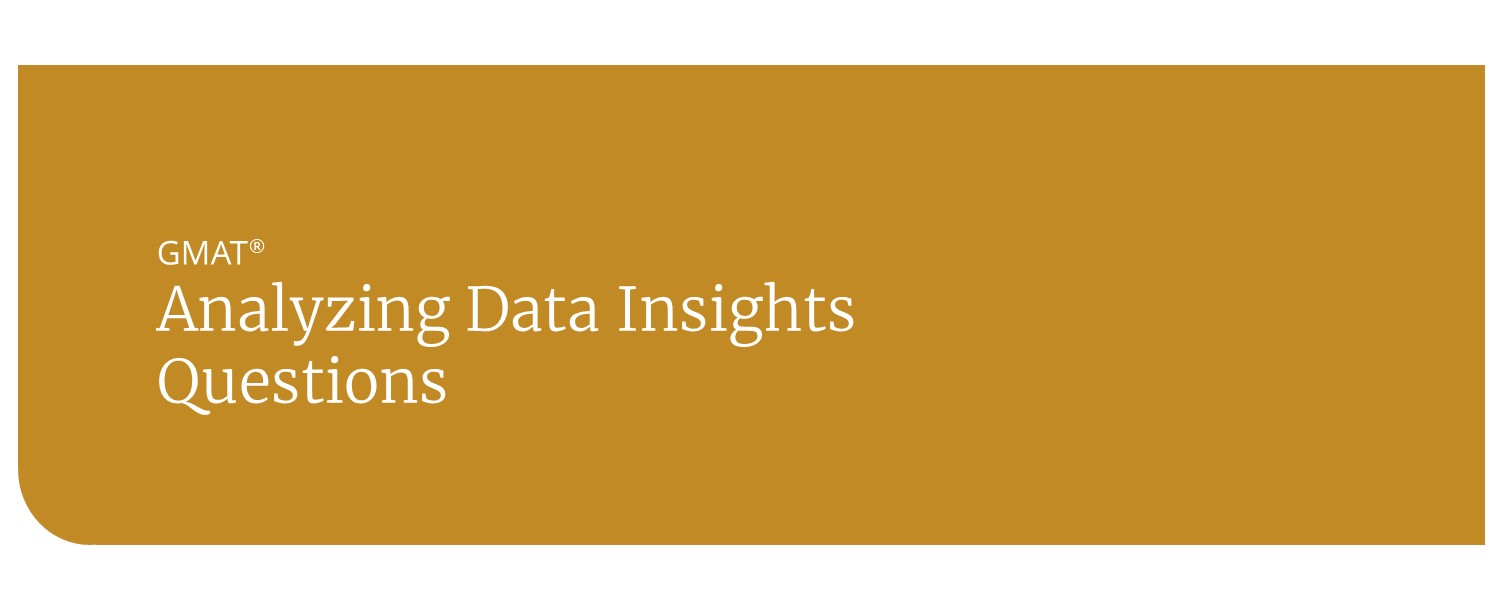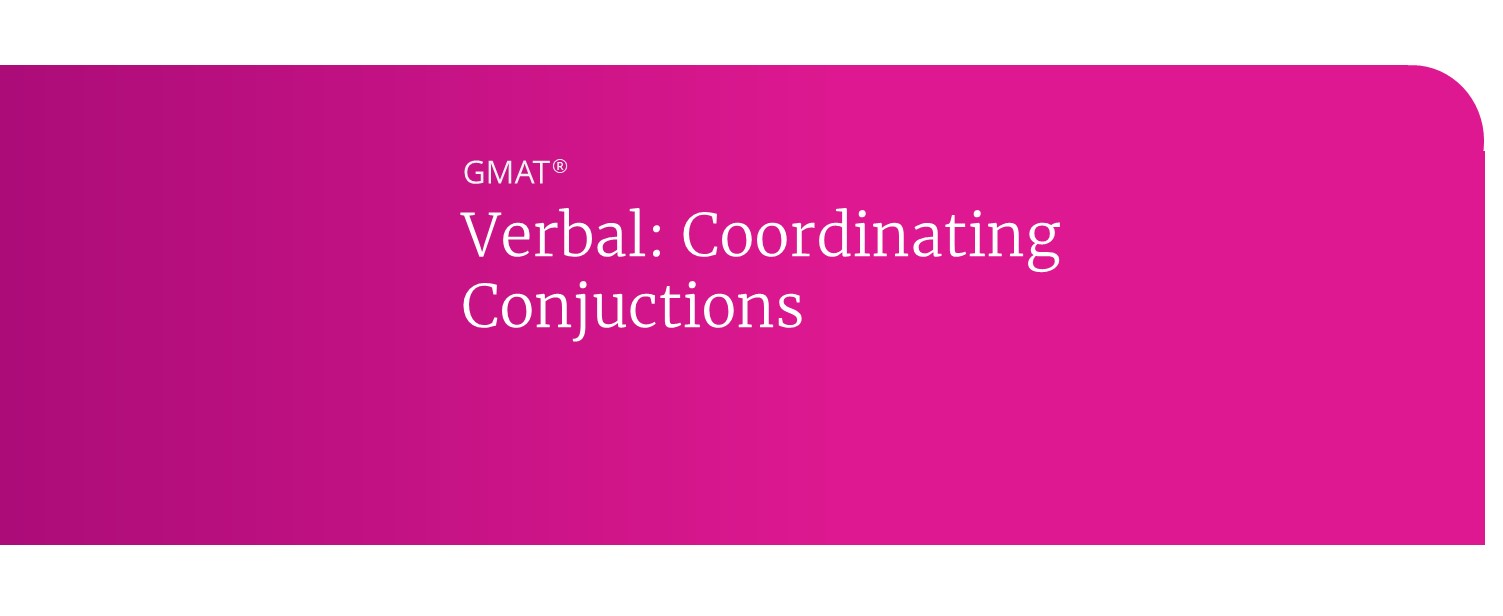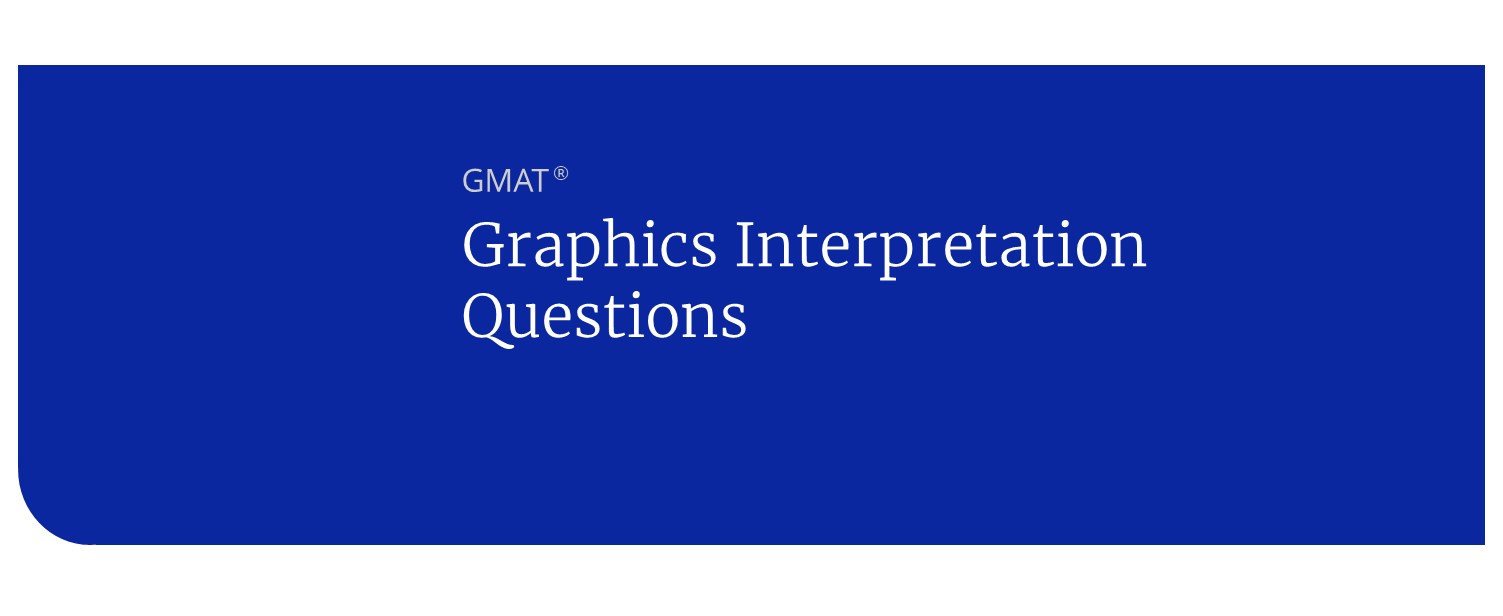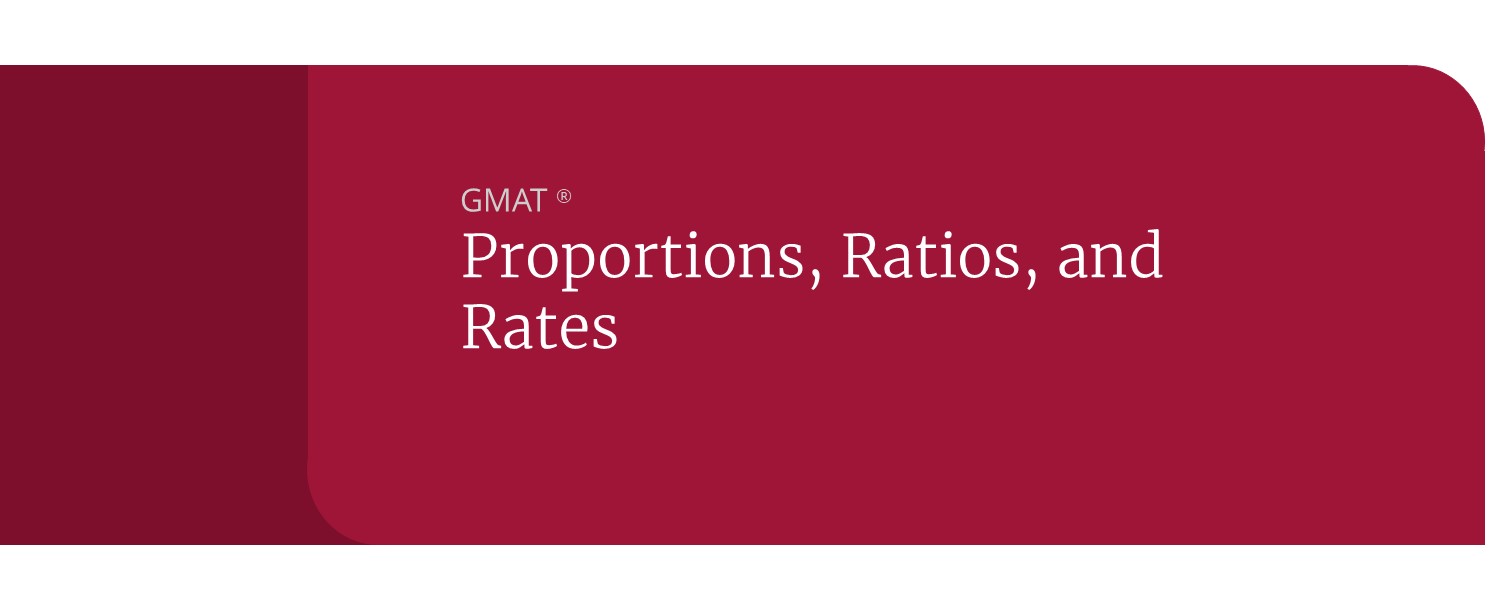What's Tested on the GMAT: Data Insights
Data Insights questions are designed to resemble problems you will encounter in business school and in your career. The Data Insights section is the only section of the GMAT that gives you access to an on-screen calculator—but don’t be tempted to over-rely on the calculator; DI questions are designed to test complex reasoning far more than simple computation.
[ RELATED: What’s Tested on the Quantitative Section of the GMAT ]
GMAT Data Insights Section Details
- You’ll have 45 minutes to complete the DI section.
- The format is 20 questions, some with multiple parts.
- This section consists of five different question types.
- This section of the GMAT will test your ability to solve complex problems using data from multiple sources.
- Your score will count toward your 205–805 total score.
[ RELATED: What’s a good GMAT Score ]
Graphics Interpretation Questions on the GMAT
Graphics Interpretation questions test your ability to interpret and analyze data presented visually in graphs or graphical images. For each question, you will see a graph with accompanying text and two questions.
As with a Reading Comprehension passage, you do not need to absorb every bit of information on the graph to answer the questions. What you do need to do is get the gist of the graph and what it contains so that you can efficiently find the information you need. You will then read the question stem, view the answer choices, and use the information in the graph to select the correct answer.
Graphics Interpretation questions feature many different types of traditional and non-traditional graphs, such as line graphs, pie charts, scatter plots, Venn diagrams, and even geological timelines or organizational charts.
Multi-Source Reasoning Questions on the GMAT
As its name suggests, Multi-Source Reasoning questions test your ability to take information from multiple sources and synthesize it to answer questions. The information will be presented on two to three tabbed pages. You will have to click through the tabs to find the information you need. The data can be in the form of text, charts, or tables and may be presented in a combination of all three.
The information on the tabs may seem overwhelming, so approach it similarly to how you approach Reading Comprehension. Get the gist of what the tabs contain and take brief notes highlighting the main points of each tab. Don’t try to absorb all of the information at first, but make sure you scan all of the information on each tab so that you’ll know where to find it when you answer the questions.
The tabbed pages are on the left side of the screen, and the questions are on the right. There will be three separate questions associated with a prompt, so you’ll click on the Next button to advance to the next question screen. You can get hands-on experience with tabbed pages in your online resources. Take a few minutes to become familiar with the navigation of this section. Doing so will save you valuable time when answering the questions.
Some of the questions about the tabbed information will be in the standard multiple-choice format that you’re familiar with from the Verbal and Quantitative sections. Others, called “either-or” questions, will require you to evaluate three statements on a binary scale: yes/no, true/false, justified/not justified, and so on.
Table Analysis Questions on the GMAT
Table Analysis questions measure your ability to interpret and analyze information presented in a sortable table similar to a spreadsheet. You will see a table, a paragraph of text that describes it, and one set of the same three-part multiple–dichotomous choice questions you saw for Multi-Source Reasoning (i.e., yes/no, true/false, etc.).
Directly above the table, you will see a Sort button that, when clicked, opens a drop-down menu of options that correspond to the column headers in the table. When you select a category from the drop-down menu, the entire chart will be sorted in order based on the category you select. If the information in that column is numerical, it will be sorted from lowest to highest. If the information in that column is text, it will be sorted in alphabetical order. While working through practice questions, decide how you would sort the information before answering each question. To gain experience sorting tables in the test interface, use the questions in your online resources.
Two-Part Analysis GMAT questions
Simply put, Two-Part Analysis questions have solutions in two parts. Two-Part Analysis questions consist of a few lines of text and instructions to select choices in a table based on the given information. These questions may test quantitative or verbal skills.
Solving an algebraic Two-Part Analysis usually necessitates setting up an algebraic equation with two variables. You’ll want to begin by first reading the text and identifying the two unknowns, which may be provided or may need to be assigned variables. Then, you’ll create one or more equations that relate the two values or variables. Once you’ve set up your equations, you can simplify them and look for a match (if the answer choices are algebraic equations or expressions) or start plugging in answer choices from the table until you find two corresponding values that work together.
Verbal Two-Part Analysis questions draw on many of the same logical reasoning skills, such as drawing supported inferences and finding assumptions, that you use on the Verbal section of the GMAT. For example, after reading about a type of dwelling used by a certain species of animal, you might identify from among the choices a characteristic that must be true of all dwellings of that type and a characteristic that can never be true. Alternatively, you might be asked to strengthen and weaken an author’s argument.
How Data Sufficiency Works on the GMAT
Data Sufficiency, or DS, problems present you with a question and two statements—but they’re not actually asking you to solve the math. Rather, they’re asking you to determine what information would be sufficient/necessary to allow you to do the math…if they asked you to do it.
These are a little confusing at first, but the beauty of DS is that you don’t have to actually do most of the math—and you can still solve the problem.
Data Sufficiency GMAT Practice Question
The first line is the question stem:
If Farai is twice as old as Dmitry, how old is Farai?
This question stem is both asking a question (how old is Farai) and providing a fact that you can use when evaluating the problem (Farai is twice as old as Dmitry).
The next two lines are the two statements:
- Samantha is 4 years younger than Dmitry.
- Samantha will be 11 years old in 5 years.
Finally, there are five answer choices that encompass the five possible ways you could combine the two statements to be able to calculate an answer to the question. Here’s the shorthand for each answer choice:
(A) Statement (1) works by itself, but statement (2) does not.
(B) Statement (2) works by itself, but statement (1) does not.
(C) Neither statement works by itself, but they do work together.
(D) Each statement works by itself.
(E) Even using both statements together, you can’t answer the question.
These five answer choices are always exactly the same and always given in the exact same order—so you don’t even have to read them on test day. By the time you get to the test, you’ll just know what they are.
First, jot down the fact given in the question stem, as well as the question itself:
F = 2D
F = ?
Pause for a second, What would you need to know in order to be able to solve for F? In this case, if they tell you the value for D, then you can find the value for F. So add a second question to your notes:
F = 2D
F = ? or D = ?
If a particular piece of information allows you to find a unique value for either F or D, then that information is sufficient. On the other hand, if a piece of information doesn’t allow you to find any values for F or D or it gives you multiple possible values, then that information is not sufficient to answer the question.
Next, glance at the two statements and choose one to start. On this one, for example, you might choose to start with statement (2) since it only mentions a third person, Samantha.
Statement (2) does allow you to figure out how old Samantha is today, but that’s irrelevant to the question, since it doesn’t tell you anything about F or D (at least, Samantha’s age is irrelevant without more information…). So statement (2) is pretty quick to evaluate: It is not sufficient to answer the question.
Answers (B) and (D) both say that statement (2) is sufficient to answer the question, so eliminate choices (B) and (D).
Next, look at statement (1)—and only statement (1). Forget that statement (2) exists. (You’ll learn why in a minute.)
Statement (1) by itself provides a relationship between Samantha’s age and Dmitry’s age. But it doesn’t provide an actual age for anyone—not Samantha or Dmitry or Farai. So this statement by itself isn’t sufficient to answer the question; eliminate answer (A), which says that statement (1) works by itself. (If you hadn’t already eliminated answer (D), you could also eliminate that answer now.)
Finally, look at the two statements together. Statement (2) allows you to find Samantha’s current age. Once you know Samantha’s age, you can plug it into Statement (1) to find Dmitry’s age. And knowing Dmitry’s age is sufficient to allow you to find Farai’s age—so using the two statements together, it is possible to answer the question.
Answer and Explanation
The correct answer is (C). Neither statement works by itself, but they do work together.
You can only choose this answer if you have first determined that each statement does not work by itself. That’s why, earlier, you had to forget about statement (2) and just look at statement (1) by itself.
On this problem, the two statements do work together, so the answer is (C), but if even putting the two statements together doesn’t provide enough information to answer the question that was asked, then the correct answer to the problem would be (E).
By the way, how old is Farai—what’s the actual number? No idea. Don’t waste time calculating; you don’t need to do that in order to find the correct answer to a Data Sufficiency problem.
It takes some time to wrap your brain around Data Sufficiency—practice these every day for two to three weeks until you get used to the structure and organization of the statements and answer choices.
How to Prepare for GMAT DI
Data Insight questions measure the same skills that you use for the Quantitative and Verbal sections of the test, such as paraphrasing information, finding keywords, determining whether an inference is supported, and using estimation instead of calculation.
The DI section is weighted equally with the other two sections in determining your overall score. Because this section is specifically designed to mimic real-world scenarios that will come up both in business school and at work, schools want to see a solid DI score on your record.
GMAT DI is identical to the GMAT Quantitative and Verbal sections in that you use a college-level command of reasoning and math to negotiate critical thinking puzzles amidst the constraints of the clock and the online testing scenario. Similarly, DI offers a business-oriented, problem-solving scenario in which you must manipulate spreadsheets and statistical information in order to deduce inferences that answer the questions asked.
After you have learned the math rules and concepts that are covered in the DI and Quant sections of the GMAT, concentrate on mastering the strategies for the five DI question types: Data Sufficiency, Tables, Graphs, Multi-Source Reasoning, and Two-Parts.
- Drill yourself back to a daily familiarity with the math and reasoning skills demanded by the GMAT.
- Acquaint yourself with the unique medium and format of the Data Insights section. Get used to the repeated ways in which DI presents information and questions and the patterned methods to efficiently attack the problem solving it demands.
- Practice your math and reasoning skills on DI-format problems, at first on individual questions and, over time, on timed question sets.
- Periodically, take a full-length practice test to gain experience under test-like conditions and to evaluate your progress.
- Analyze your practice test results to determine your current strengths and weaknesses. Use this information to inform your study plan until it’s time to take another practice test.

